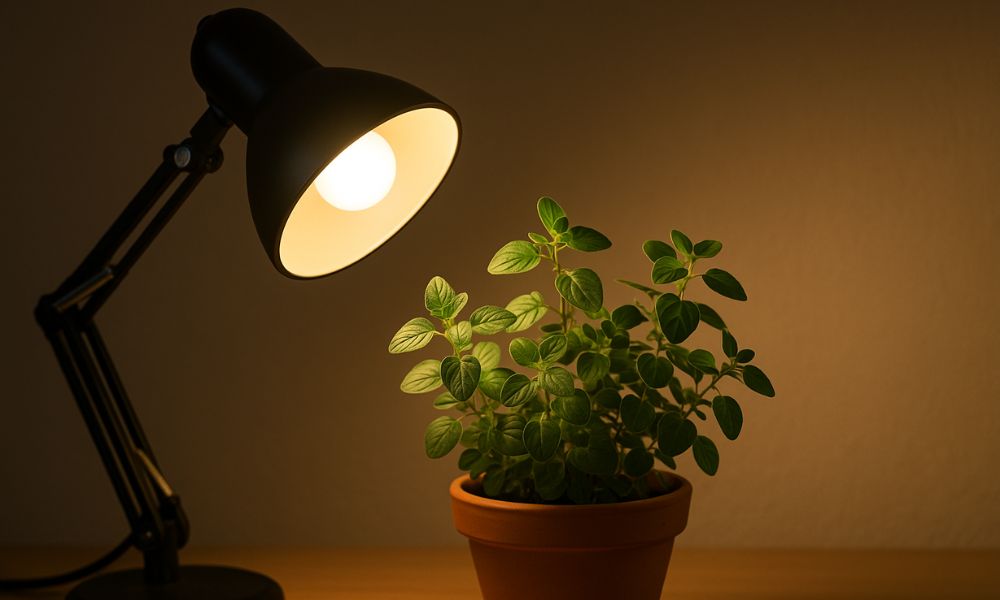Ever wondered if that old desk lamp could help your plants grow? I asked myself the same thing one cold winter when my herbs started to fade. It made me curious — Will a regular light bulb help plants grow, or do they need special lights? I soon learned that not every bulb gives plants what they need. Some give heat but not the right color of light. In this article, I’ll share what I found, what lights work best, and how you can help your plants grow strong even indoors.
Understanding How Plants Use Light
Have you noticed how plants lean toward the window? They do that because light is their food. Through photosynthesis, plants use light to make energy from water and air — it’s how they grow and stay alive. In simple terms, plants use light to make food through photosynthesis, turning light energy into growth.
But not every kind of light helps them equally. Plants need the right light spectrum, especially blue and red light, to stay healthy. Blue light helps leaves grow strong, while red light supports blooming and fruiting. So yes, plants need blue and red light for healthy growth, not just any bright bulb.
I learned this the hard way when I used a desk lamp for my herbs. They looked bright at first but soon turned thin and pale. That’s when I realized light quality matters more than brightness — plants crave the right color mix, not just strong light.
Can a Regular Light Bulb Help Plants Grow?
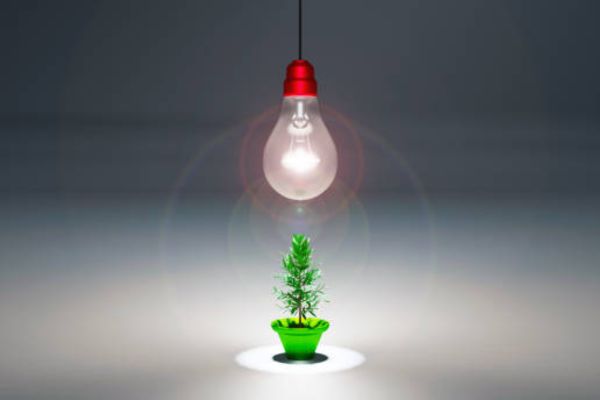
You might think any bright bulb can help your plants grow, but that’s not true. A regular light bulb won’t help plants grow well because it lacks the right colors of light. Plants need blue and red light to make food, not just brightness.
Incandescent bulbs emit excessive heat and can burn leaves. Fluorescent bulbs stay cooler but still miss parts of the light plants need. Regular LED bulbs are better, but most don’t have the full mix found in grow lights.
Your plants may live under regular bulbs, but they won’t thrive. I learned this when I used a desk lamp for herbs — they grew tall but weak and pale.
Will Regular LED Lights Grow Plants?
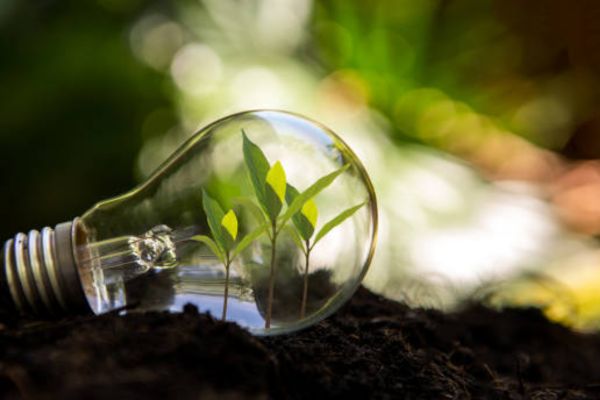
Many people ask, do LED lights help plants grow? The short answer is — yes, but not all of them. Regular LED bulbs give light that looks bright to us, but plants see light differently. They need a balance of red and blue colors for photosynthesis, and most household LEDs don’t have that full mix.
Grow LEDs are made to mimic sunlight. They use a full-spectrum light, which gives plants the right colors for both leaf and flower growth. That’s why plants under grow LEDs usually look stronger and greener.
If you want to try using a regular bulb, check the color temperature. LED bulbs between 5000K and 6500K work best for low-light plants like herbs or ferns. Still, full-spectrum grow LEDs are the better choice if you want healthy, lasting growth.
What Lights Are Best for Growing Plants Indoors
If you want strong, green plants indoors, you need the right light. Not every bulb works the same. Some only brighten your room, while others give plants what they need to grow. Here are the best grow lights for indoor plants explained simply:
01. Full-Spectrum LED Grow Lights – These copy real sunlight. They use less power, last for years, and help plants at every stage. (Best for all types of plants.)
02. Fluorescent Tubes (T5/T8) – These stay cool and cover wide areas. They’re great for seedlings and leafy greens. (Best for early growth.)
03. Compact Fluorescent Lamps (CFLs) – Small and easy to use. Perfect for herbs or plants on a desk. (Best for tight spaces.)
Quick Comparison:
| Light Type | Pros | Cons |
| Full-Spectrum LED | Best color mix, saves energy | Higher cost |
| Fluorescent Tube | Cool, wide coverage | Needs space |
| CFL | Small, simple setup | Not bright enough for big plants |
Tips for Using Artificial Light Effectively
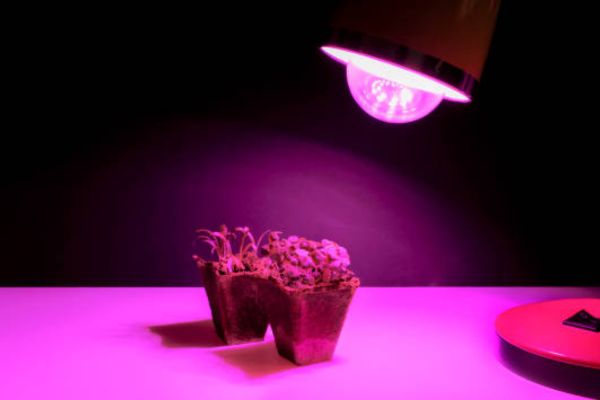
Good light helps plants grow strong, but how you use it matters too. Small changes can make a big difference in how your plants look and grow. Here are some simple tips that work for me:
Keep your lights 6–12 inches away from plants. Too close can burn leaves, too far makes them stretch and weaken. I use a small stand to adjust the height as my plants grow.
Use a timer to keep lights on for 12–16 hours a day. Plants need rest too, so turn them off at night. I set mine to switch off automatically before bedtime.
Rotate your plants once a week. This helps them grow evenly instead of bending toward the light. Add good airflow and watering to balance everything — dry air or soggy soil can undo all your light work.
In my setup, I use a simple LED grow light above a small herb tray near the window. It’s easy to manage and keeps my herbs green even in winter.
Common Mistakes When Growing Plants Under Regular Lights
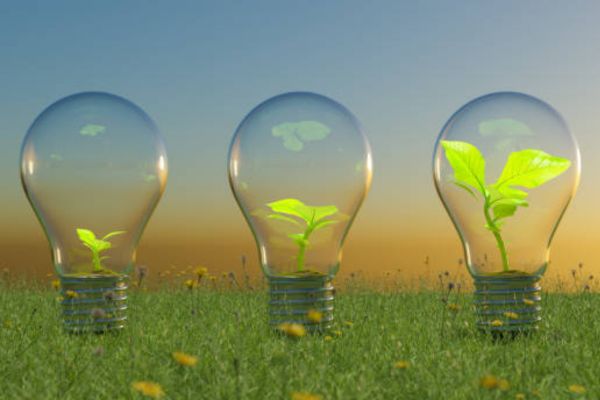
Many people think more light means better growth, but that’s not true. Small mistakes can stop plants from growing well. Here’s how to avoid them.
01. Bulbs that are too hot. Regular bulbs give off heat that burns leaves. Keep lights 6–12 inches away or use cool LEDs.
02. Lights on all day. Plants need rest. Give them 12–16 hours of light, then darkness to recover.
03. Weak or wrong-colored bulbs. Dim bulbs or wrong colors don’t help plants grow. Pick bright, full-spectrum LEDs between 5000K and 6500K.
04. Poor distance or reflection. If light doesn’t spread, plants grow unevenly. Rotate pots and use white walls to reflect light.
FAQs
What color light is best for plants?
Blue light helps leaves grow, and red light helps flowers bloom. Plants need both for balance.
Can I use my desk lamp for my houseplants?
You can, but it’s not the best choice. A daylight LED bulb will give better results and healthier growth.
How many hours of light do indoor plants need?
Most plants need 12–16 hours of light each day and darkness at night to rest and recover.
Final Thought
Regular bulbs can keep your plants alive, but they can’t replace real sunlight or quality grow lights. Plants need the right mix of colors, not just brightness, to stay strong and healthy.
If you want better growth, switch to energy-efficient LED grow lights. They use less power, last longer, and give your plants the full spectrum they need to thrive.

